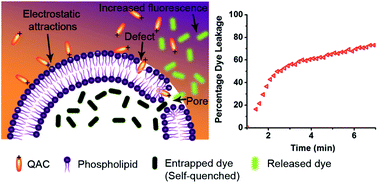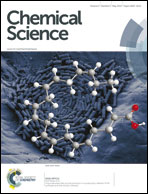Bio-inspired resin acid-derived materials as anti-bacterial resistance agents with unexpected activities†
Abstract
Methicillin-resistant Staphylococcus aureus (MRSA), a complex of multidrug resistant Gram-positive bacterial strains, has proven especially problematic in both hospital and community-settings, resulting in increased mortality rates and hospitalization costs. Emergence of resistance even to vancomycin, the standard reference for MRSA treatment, builds up pressure for the search of novel alternatives. We report potent natural resin acid-based cationic antimicrobial compounds and polymers that exhibit surprising antimicrobial activity against a range of MRSA strains, yet are largely non-toxic against mammalian cells. Molecular dynamics simulations and dye-leakage assays with anionic phospholipid membrane mimics of bacteria demonstrate a membrane-lysing effect induced by unique fused ring structures of resin acids that may constitute the principal mechanism of action for selective lysis of bacterial cells over mammalian cells. Our antimicrobial materials are derived from an unlikely yet abundant natural source, and offer a novel alternative to currently-used approaches.


 Please wait while we load your content...
Please wait while we load your content...